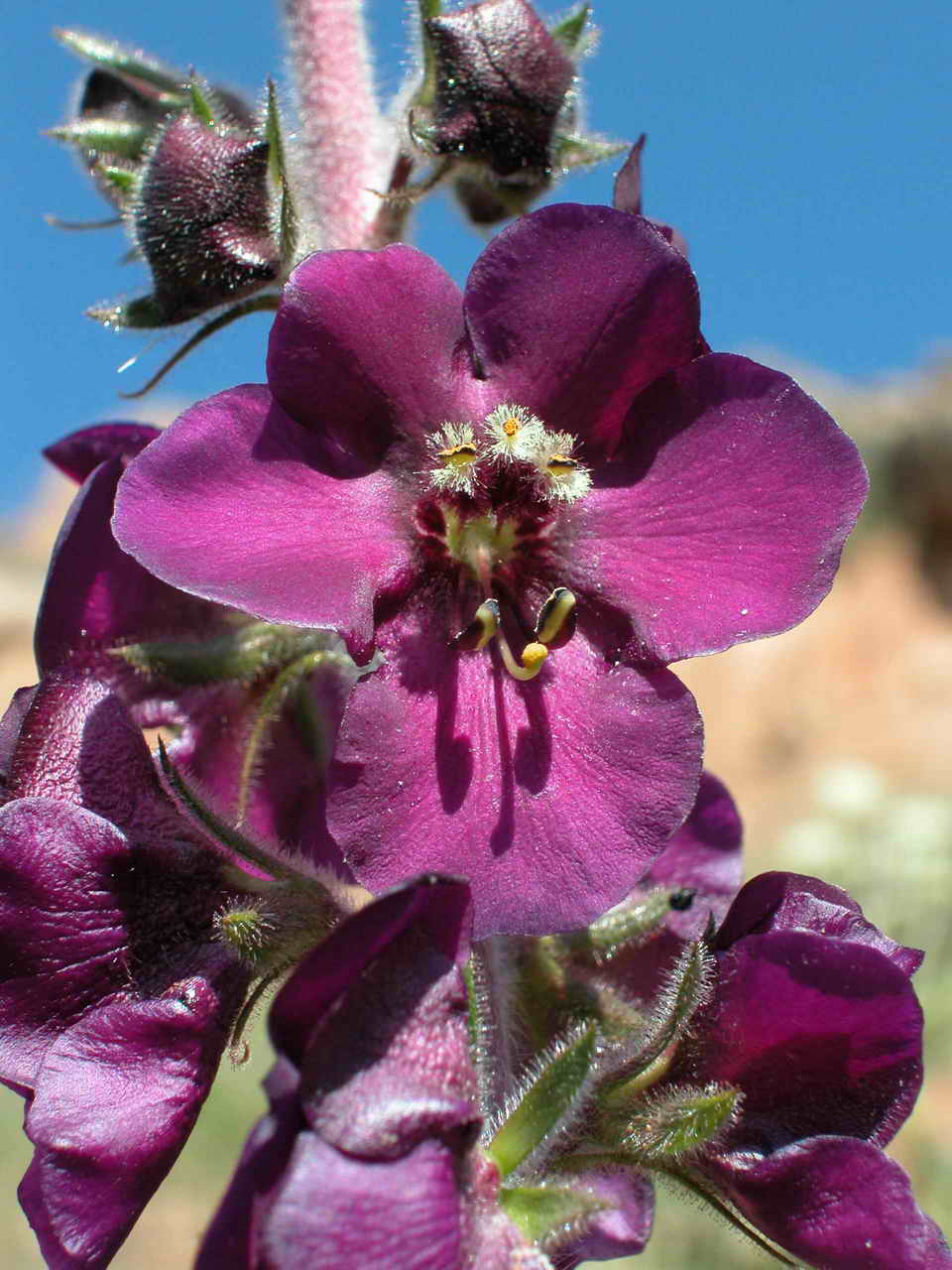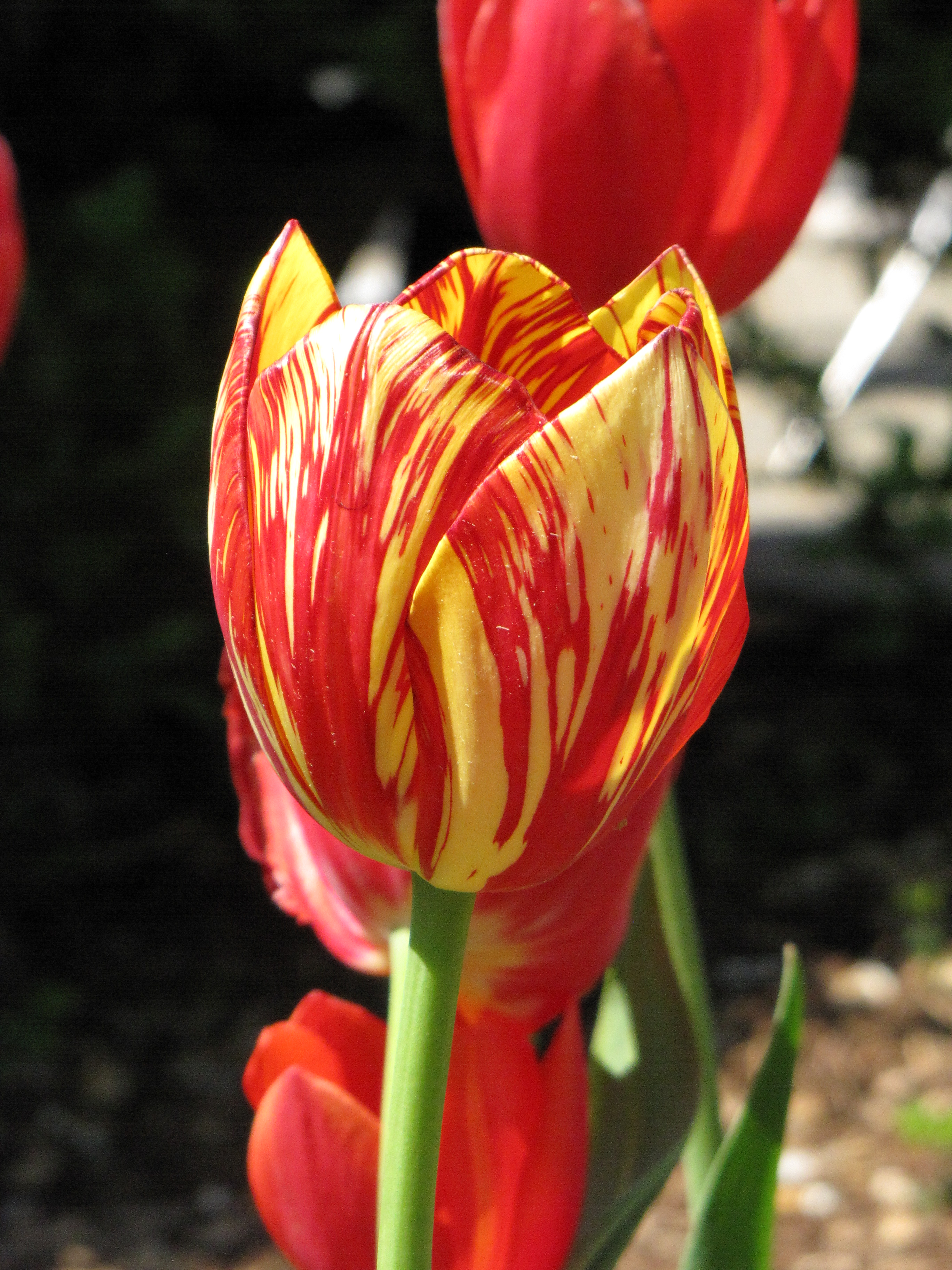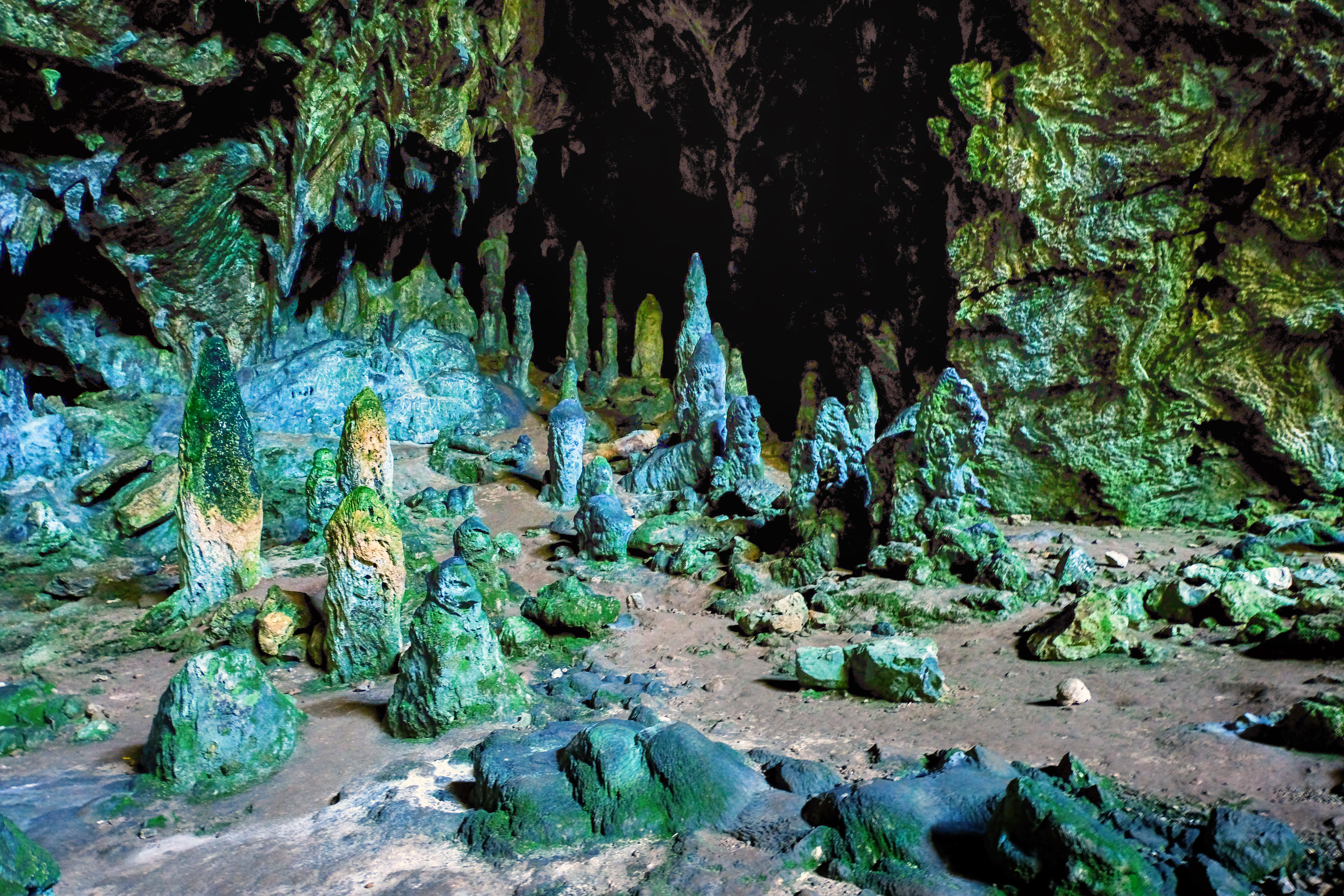|
Tulipa Armena
''Tulipa armena'' is a species of flowering plant in the Liliaceae family. It is referred to by the common name Armenian tulip, and is native to the historical Armenian Highlands as the name implies; current regions of Armenia, modern day Turkey, Iran, South Caucasus, and Azerbaijan. Description ''Tulipa armena'' is extremely variable. The bulb has a papery tunic that is not very hairy. The stems are between eight and 25 cm long, the 3–6 leaves are broad, scimitar-shaped, hairy or smooth and often have wavy edges. They are grey-green, but with a red overlay. They can be up to 20 cm long. The large solitary flowers are cup- or bowl-shaped and very variable. Some are red with a dark violet, black or dark green basal blotch, sometimes striped and mottled in yellow, others yellow, in the red form, sometimes the black basal blotch has a yellow border. The tepals are normally oval. The filaments are black or blackish purple, the anthers yellow or black. ''Tulipa armena'' i ... [...More Info...] [...Related Items...] OR: [Wikipedia] [Google] [Baidu] |
Pierre Edmond Boissier
Pierre Edmond Boissier (25 May 1810 Geneva – 25 September 1885 Valeyres-sous-Rances) was a Swiss prominent botanist, explorer and mathematician. He was the son of Jacques Boissier (1784-1857) and Caroline Butini (1786-1836), daughter of Pierre Butini (1759-1838) a well-known physician and naturalist from Geneva. With his sister, Valérie Boissier (1813-1894), he received a strict education with lessons delivered in Italian and Latin. Edmond's interest in natural history stemmed from holidays in the company of his mother and his grandfather, Pierre Butini at Valeyres-sous-Rances. His hikes in the Jura and the Alps laid the foundation of his zest for later exploration and adventure. He attended a course at the Academy of Geneva given by Augustin Pyramus de Candolle. Edmond Boissier collected extensively in Europe, North Africa and western Asia, on occasion accompanied by his daughter, Caroline Barbey-Boissier (1847-1918) and her husband, William Barbey (1842-1914), who collect ... [...More Info...] [...Related Items...] OR: [Wikipedia] [Google] [Baidu] |
Tulipa Julia
Tulips (''Tulipa'') are a genus of spring-blooming perennial herbaceous bulbiferous geophytes (having bulbs as storage organs). The flowers are usually large, showy and brightly coloured, generally red, pink, yellow, or white (usually in warm colours). They often have a different coloured blotch at the base of the tepals (petals and sepals, collectively), internally. Because of a degree of variability within the populations, and a long history of cultivation, classification has been complex and controversial. The tulip is a member of the lily family, Liliaceae, along with 14 other genera, where it is most closely related to '' Amana'', ''Erythronium'' and ''Gagea'' in the tribe Lilieae. There are about 75 species, and these are divided among four subgenera. The name "tulip" is thought to be derived from a Persian word for turban, which it may have been thought to resemble by those who discovered it. Tulips originally were found in a band stretching from Southern Europe to Cent ... [...More Info...] [...Related Items...] OR: [Wikipedia] [Google] [Baidu] |
Garden Plants
A garden is a planned space, usually outdoors, set aside for the cultivation, display, and enjoyment of plants and other forms of nature. The single feature identifying even the wildest wild garden is ''control''. The garden can incorporate both natural and artificial materials. Gardens often have design features including statuary, follies, pergolas, trellises, stumperies, dry creek beds, and water features such as fountains, ponds (with or without fish), waterfalls or creeks. Some gardens are for ornamental purposes only, while others also produce food crops, sometimes in separate areas, or sometimes intermixed with the ornamental plants. Food-producing gardens are distinguished from farms by their smaller scale, more labor-intensive methods, and their purpose (enjoyment of a hobby or self-sustenance rather than producing for sale, as in a market garden). Flower gardens combine plants of different heights, colors, textures, and fragrances to create interest and delight the se ... [...More Info...] [...Related Items...] OR: [Wikipedia] [Google] [Baidu] |
Flora Of Turkey
about 9300 species of vascular plant were known to grow in Turkey. By comparison, Europe as a whole contains only about 24% more species (about 11500), despite having thirteen times the area. The most important reasons for the high plant biodiversity are believed to be the relatively high proportion of endemics, together with the high variety of soils and climate of Turkey. Endemism A third of Turkish plant species are endemic to Turkey: one reason there are so many is because the surface of Anatolia is both mountainous and quite fragmented. In fact, the Anatolian mountains resemble archipelagos like the famous Galapagos Islands. Since Darwin we know that geographic isolation between islands or separated mountains is an important means of speciation, leading to high spatial diversity. For Anatolia this assumption is confirmed by concentrations of endemism on highly isolated and relatively old massifs such as Uludağ and Ilgaz Dağ, whereas very young volcanic cones such ... [...More Info...] [...Related Items...] OR: [Wikipedia] [Google] [Baidu] |
Flora Of Iran
Flora is all the plant life present in a particular region or time, generally the naturally occurring (indigenous) native plants. Sometimes bacteria and fungi are also referred to as flora, as in the terms '' gut flora'' or '' skin flora''. Etymology The word "flora" comes from the Latin name of Flora, the goddess of plants, flowers, and fertility in Roman mythology. The technical term "flora" is then derived from a metonymy of this goddess at the end of the sixteenth century. It was first used in poetry to denote the natural vegetation of an area, but soon also assumed the meaning of a work cataloguing such vegetation. Moreover, "Flora" was used to refer to the flowers of an artificial garden in the seventeenth century. The distinction between vegetation (the general appearance of a community) and flora (the taxonomic composition of a community) was first made by Jules Thurmann (1849). Prior to this, the two terms were used indiscriminately.Thurmann, J. (1849). ''Essai de ... [...More Info...] [...Related Items...] OR: [Wikipedia] [Google] [Baidu] |
Tulipa
Tulips (''Tulipa'') are a genus of spring-blooming perennial herbaceous bulbiferous geophytes (having bulbs as storage organs). The flowers are usually large, showy and brightly coloured, generally red, pink, yellow, or white (usually in warm colours). They often have a different coloured blotch at the base of the tepals (petals and sepals, collectively), internally. Because of a degree of variability within the populations, and a long history of cultivation, classification has been complex and controversial. The tulip is a member of the lily family, Liliaceae, along with 14 other genera, where it is most closely related to '' Amana'', ''Erythronium'' and ''Gagea'' in the tribe Lilieae. There are about 75 species, and these are divided among four subgenera. The name "tulip" is thought to be derived from a Persian word for turban, which it may have been thought to resemble by those who discovered it. Tulips originally were found in a band stretching from Southern Europe to Cent ... [...More Info...] [...Related Items...] OR: [Wikipedia] [Google] [Baidu] |
Tulipa Gumusanica
''Tulipa armena'' is a species of flowering plant in the Liliaceae family. It is referred to by the common name Armenian tulip, and is native to the historical Armenian Highlands as the name implies; current regions of Armenia, modern day Turkey, Iran, South Caucasus, and Azerbaijan. Description ''Tulipa armena'' is extremely variable. The bulb has a papery tunic that is not very hairy. The stems are between eight and 25 cm long, the 3–6 leaves are broad, scimitar-shaped, hairy or smooth and often have wavy edges. They are grey-green, but with a red overlay. They can be up to 20 cm long. The large solitary flowers are cup- or bowl-shaped and very variable. Some are red with a dark violet, black or dark green basal blotch, sometimes striped and mottled in yellow, others yellow, in the red form, sometimes the black basal blotch has a yellow border. The tepals are normally oval. The filaments are black or blackish purple, the anthers yellow or black. ''Tulipa armena'' i ... [...More Info...] [...Related Items...] OR: [Wikipedia] [Google] [Baidu] |
Royal Botanic Gardens, Kew
Royal Botanic Gardens, Kew is a non-departmental public body in the United Kingdom sponsored by the Department for Environment, Food and Rural Affairs. An internationally important botanical research and education institution, it employs 1,100 staff. Its board of trustees is chaired by Dame Amelia Fawcett. The organisation manages botanic gardens at Kew in Richmond upon Thames in south-west London, and at Wakehurst, a National Trust property in Sussex which is home to the internationally important Millennium Seed Bank, whose scientists work with partner organisations in more than 95 countries. Kew, jointly with the Forestry Commission, founded Bedgebury National Pinetum in Kent in 1923, specialising in growing conifers. In 1994, the Castle Howard Arboretum Trust, which runs the Yorkshire Arboretum, was formed as a partnership between Kew and the Castle Howard Estate. In 2019, the organisation had 2,316,699 public visitors at Kew, and 312,813 at Wakehurst. Its site at Kew ... [...More Info...] [...Related Items...] OR: [Wikipedia] [Google] [Baidu] |
Karabakh
Karabakh ( az, Qarabağ ; hy, Ղարաբաղ, Ġarabaġ ) is a geographic region in present-day southwestern Azerbaijan and eastern Armenia, extending from the highlands of the Lesser Caucasus down to the lowlands between the rivers Kura (Caspian Sea), Kura and Aras River, Aras. It is conventionally divided into three regions: Highland Karabakh, Lowland Karabakh (the steppes between the Kura (Caspian Sea), Kura and Aras river, Aras rivers), and the eastern slopes of the Zangezur Mountains (roughly Syunik Province, Syunik and Kalbajar–Lachin Economic Region, Kalbajar–Lachin).Robert H. Hewsen, Hewsen, Robert H. "The Meliks of Eastern Armenia: A Preliminary Study," ''Revue des Études Arméniennes'' 9 (1972), p. 289, note 17. Etymology The Russian language, Russian name , Romanization of Russian, transliterated , derives from the Azerbaijani language, Azerbaijani , which is generally believed to be a compound of the Turkic language, Turkic word ''kara'' (black) and the Irania ... [...More Info...] [...Related Items...] OR: [Wikipedia] [Google] [Baidu] |
Type (biology)
In biology, a type is a particular specimen (or in some cases a group of specimens) of an organism to which the scientific name of that organism is formally attached. In other words, a type is an example that serves to anchor or centralizes the defining features of that particular taxon. In older usage (pre-1900 in botany), a type was a taxon rather than a specimen. A taxon is a scientifically named grouping of organisms with other like organisms, a set that includes some organisms and excludes others, based on a detailed published description (for example a species description) and on the provision of type material, which is usually available to scientists for examination in a major museum research collection, or similar institution. Type specimen According to a precise set of rules laid down in the International Code of Zoological Nomenclature (ICZN) and the International Code of Nomenclature for algae, fungi, and plants (ICN), the scientific name of every taxon is almost al ... [...More Info...] [...Related Items...] OR: [Wikipedia] [Google] [Baidu] |
Marmaris
Marmaris () is a port city and tourist resort on the Mediterranean coast, located in Muğla Province, southwest Turkey, along the shoreline of the Turkish Riviera. Although Marmaris is known for its honey, its main source of income is international tourism. It is located between two intersecting sets of mountains by the sea, though following a construction boom in the 1980s, little is left of the sleepy fishing village that Marmaris was until the late 20th century. In 2010, the city's resident population was 30,957, although it peaks at around 300,000 to 400,000 people during the tourist season. As an adjunct to the tourism industry, Marmaris is also a centre for sailing and diving, possessing two major and several smaller marinas. It is a popular wintering location for hundreds of cruising boaters. Dalaman Airport is an hour's drive to the east. Ferries operate from Marmaris to Rhodes and Symi in Greece. Etymology During the period of the Beylik of Menteşe; the city became ... [...More Info...] [...Related Items...] OR: [Wikipedia] [Google] [Baidu] |
Georgia (country)
Georgia (, ; ) is a transcontinental country at the intersection of Eastern Europe and Western Asia. It is part of the Caucasus region, bounded by the Black Sea to the west, by Russia to the north and northeast, by Turkey to the southwest, by Armenia to the south, and by Azerbaijan to the southeast. The country covers an area of , and has a population of 3.7 million people. Tbilisi is its capital as well as its largest city, home to roughly a third of the Georgian population. During the classical era, several independent kingdoms became established in what is now Georgia, such as Colchis and Iberia. In the early 4th century, ethnic Georgians officially adopted Christianity, which contributed to the spiritual and political unification of the early Georgian states. In the Middle Ages, the unified Kingdom of Georgia emerged and reached its Golden Age during the reign of King David IV and Queen Tamar in the 12th and early 13th centuries. Thereafter, the kingdom decl ... [...More Info...] [...Related Items...] OR: [Wikipedia] [Google] [Baidu] |






.jpg)
